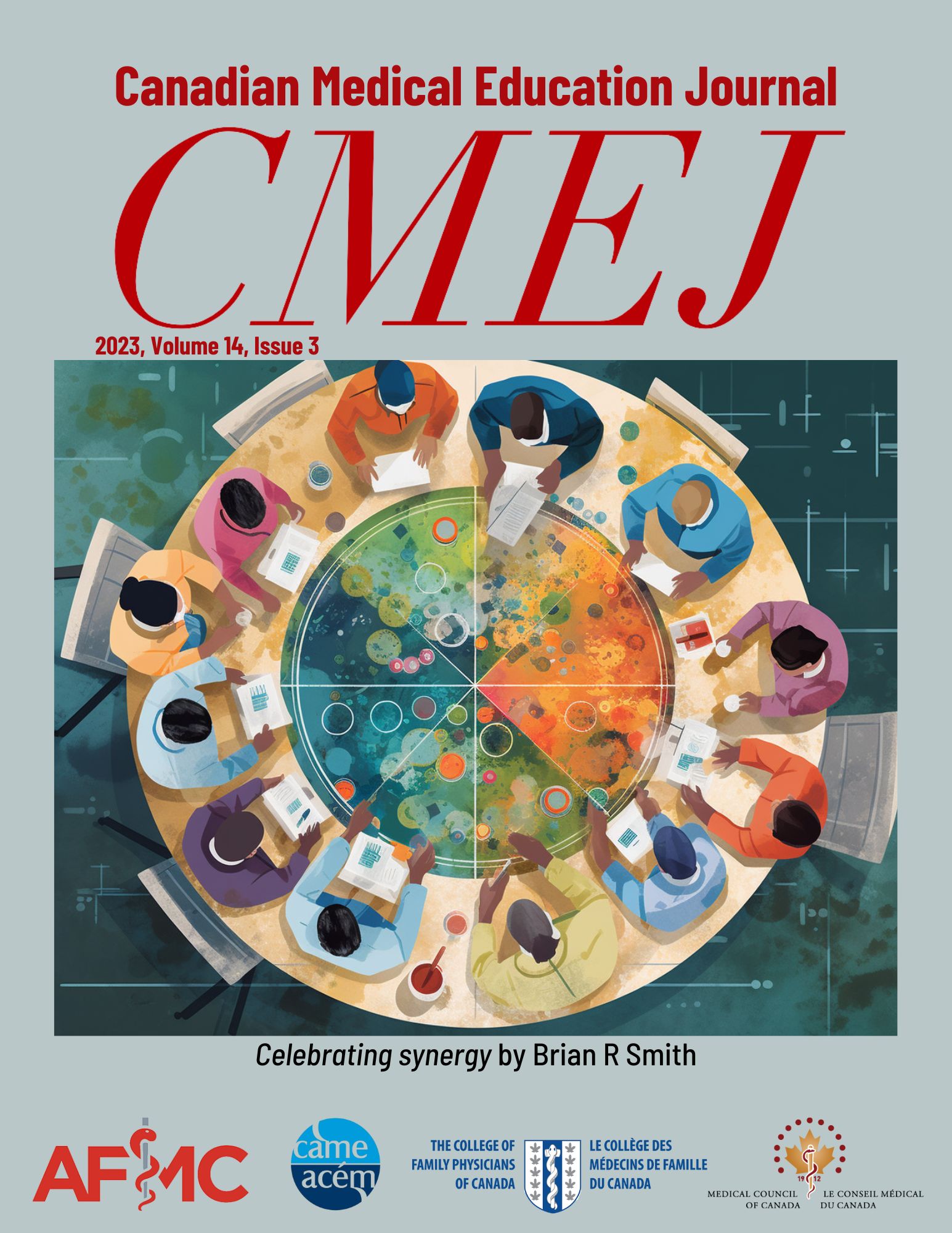Introducing medical students to deep learning through image labelling: a new approach to meet calls for greater artificial intelligence fluency among medical trainees
DOI:
https://doi.org/10.36834/cmej.75074Abstract
Implication Statement
Our approach addresses the urgent need for AI experience for the doctors of tomorrow. Through a medical education-focused approach to data labelling, we have fostered medical student competence in medical imaging and AI. We envision our framework being applied at other institutions and academic groups to develop robust labelling programs for research endeavours. Application of our approach to core visual modalities within medicine (e.g. interpretation of ECGs, diagnostic imaging, dermatologic findings) can lead to valuable student experience and competence in domains that feature prominently in clinical practice, while generating much needed data in fields that are ripe for AI integration.
Downloads
References
Richard Reznick, Harris K, Horsley T, Sheikh Hassani M. Artificial intelligence (AI) and emerging digital technologies [Internet]. Royal College of Physicians and Surgeons of Canada; 2020 Feb Available from: https://www.royalcollege.ca/rcsite/health-policy/initiatives/ai-task-force-e [Accessed on Sep 9, 2021].
Law M, Veinot P, Campbell J, Craig M, Mylopoulos M. Computing for Medicine: Can We Prepare Medical Students for the Future? Acad Med J Assoc Am Med Coll. 2019 Mar;94(3):353–7. https://doi.org/10.1097/ACM.0000000000002521
Rampton V, Mittelman M, Goldhahn J. Implications of artificial intelligence for medical education. Lancet Digit Health. 2020 Mar;2(3):e111–2. https://doi.org/10.1016/S2589-7500(20)30023-6
Paranjape K, Schinkel M, Nannan Panday R, Car J, Nanayakkara P. Introducing artificial intelligence training in medical education. JMIR Med Educ. 2019 Dec 3;5(2):e16048. https://doi.org/10.2196/16048
Labelbox [Internet]. 2022. Available from: https://labelbox.com [Accessed on Apr 2, 2022].
Arntfield R, Wu D, Tschirhart J, et al. Automation of lung ultrasound interpretation via deep learning for the classification of normal versus abnormal Lung Parenchyma: a multicenter study. Diagn Basel Switz. 2021 Nov 4;11(11):2049. https://doi.org/10.3390/diagnostics11112049
Downloads
Published
How to Cite
Issue
Section
License
Copyright (c) 2022 Jared Tschirhart, Amadene Woolsey, Jamila Skinner, Khadija Ahmed, Courtney Fleming, Justin Kim, Chintan Dave, Robert Arntfield

This work is licensed under a Creative Commons Attribution-NonCommercial-NoDerivatives 4.0 International License.
Submission of an original manuscript to the Canadian Medical Education Journal will be taken to mean that it represents original work not previously published, that it is not being considered elsewhere for publication. If accepted for publication, it will be published online and it will not be published elsewhere in the same form, for commercial purposes, in any language, without the consent of the publisher.
Authors who publish in the Canadian Medical Education Journal agree to release their articles under the Creative Commons Attribution-Noncommercial-No Derivative Works 4.0 Canada Licence. This licence allows anyone to copy and distribute the article for non-commercial purposes provided that appropriate attribution is given. For details of the rights an author grants users of their work, please see the licence summary and the full licence.











